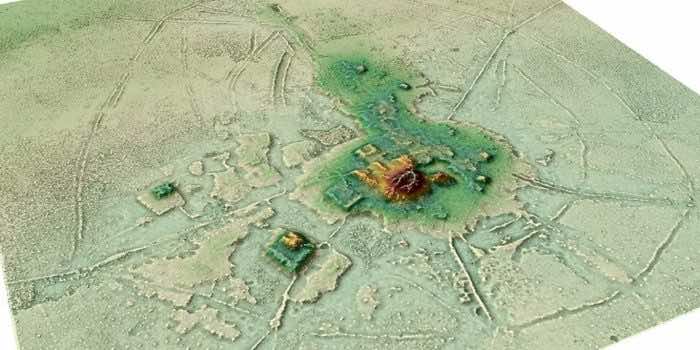A new network of ‘lost’ ancient cities has been discovered in the Amazon through lidar technology called ‘lasers in the sky.’
The cities, built by the Casarabe communities between 500-1400 AD, are in the Llanos de Mojos savannah forest, Bolivia.
They have 16ft-high terraces covering 54 acres and 69ft-tall conical pyramids.

The international team of researchers from the UK and Germany also found a vast network of reservoirs, causeways, and checkpoints.
‘We long suspected that the most complex pre-Columbian societies in the whole basin developed in this part of the Bolivian Amazon, but the evidence is concealed under the forest canopy and is hard to visit in person,’ said José Iriarte from the University of Exeter.
The researchers employed the airborne laser technology lidar (light detection and ranging) for the first time in the Amazon region.
This features surveying the terrain with a laser scanner attached to a helicopter, small aircraft, or drone that transmits around 1.5 million laser pulses per second. The vegetation is then digitally removed, creating a digital model of the earth’s surface which can also be displayed as a 3D image.
‘So the entire region was densely settled, a pattern that overturns all previous ideas,’ says Prof. Betancourt.

‘For the first time, we can refer to pre-Hispanic urbanism in the Amazon and show the map of the Cotoca site, the largest settlement of the Casarabe culture known to us so far.’
The researchers state that these cities were constructed and managed not at odds with nature, but alongside it – employing successful sustainable subsistence strategies that made use of conservationism and maintained the rich biodiversity of the surrounding landscape.
They also seem to have created urban landscapes in tandem – providing a previously undiscovered cultural-ecological heritage.
‘Our results put to rest arguments that western Amazonia was sparsely populated in pre-Hispanic times. The architectural layout of Casarabe culture large settlement sites indicates that the inhabitants of this region created a new social and public landscape.

The research, by the Deutsches Archäologisches Institut, the University of Bonn, the University of Exeter, and ArcTron 3D is published in the journal Nature.


